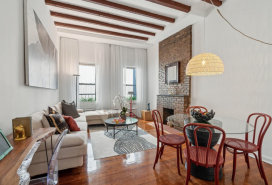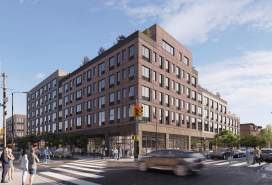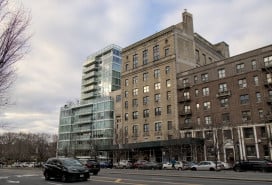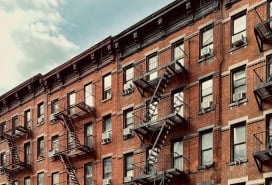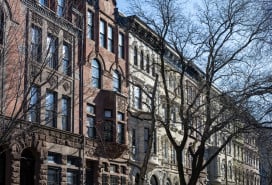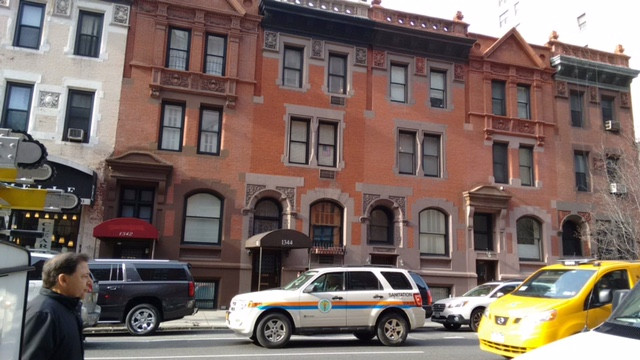The Upper West Side's Clebourne building is one of the neighborhood's historic crown jewels

Every day in New York City, you probably walk past hundreds of buildings. Many are forgettable, sure, but some are show-stopping and steeped in history. The Clebourne, at 924 West End Avenue, is one of the latter. "The Cleburne is characterized by its uncommon geometry, its porte cochere, and its notable residents through the years," says local historian Jim Mackin. "It reminds us that the Upper West Side has the largest concentration of distinguished apartment buildings in the world."
This Upper West Side building, which extends the full length of West 105th Street from Broadway to West End Avenue (and whose name is spelled in many city and historical documents without the o," as in Cleburne), sits on the plot of land where two well-known 19th century New Yorkers made their homes. One was a scoundrel and pal of the notorious Boss Tweed; the other was a much-admired retailer and paragon of civic virtue. Matthew Brennan was the former, Isidor Straus the latter.
Here's more on the building:
1. A scoundrel is part of its origins
In 1866, Matthew Brennan, a volunteer fireman, built his Italianate style house on the northeast corner of 105th Street and West End Avenue, explains Mackin. At the time, the surrounding landscape was rural and both the river views and summer breezes made it a favorite spot for summer homes of the well-heeled.
Brennan became a sheriff during the Tweed administration and in that capacity arrested Tweed twice in 1871. One year later Brennan himself was exposed in the New York Times for collecting $150,000 in fees for escorting 5,627 prisoners to prison; he had, in fact,escorted only 350.
Fast forward to 1873 and Brennan himself went to jail. His crime: dereliction of duty when, on his watch, an ally of Tweed escaped prison and had time to arrange his affairs and flee to Europe. Brennan served one month in jail. According to the Times, soon after his release, he lost most of his considerable fortune and died of apoplexy in 1879.
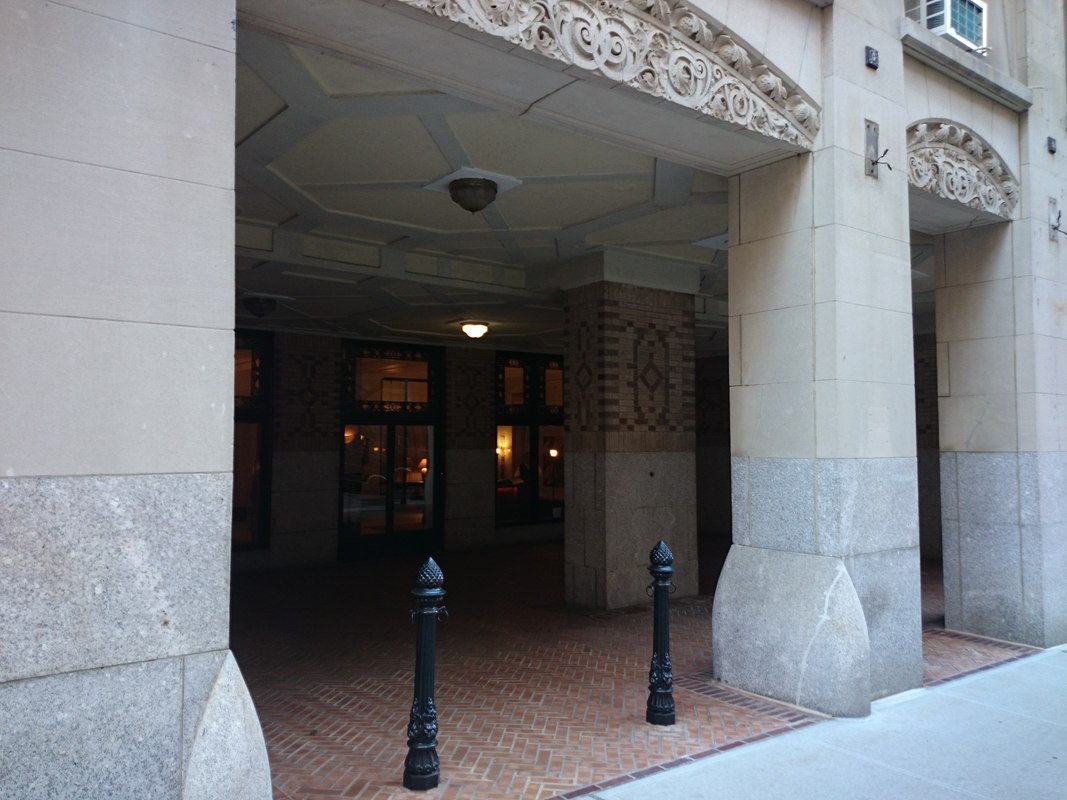
The building's porte-cochere. Credit: StreetEasy
2. It has a Titanic connection
Isidor Straus, along with his brother Nathan, became the sole owners of Macy’s in 1896. Nathan built himself a townhouse on West 72nd Street just off Central Park West but Isidor and his wife, Ida, and his family chose to stay in the Brennan-built home that they had purchased in 1883, per the Times (there had been a few other owners before the Straus purchase). Ida and Isidor raised their family in that home covered in wisteria vines and surrounded by an apple orchard, chicken coops, a barn for cows and goats and, according to Untapped Cities, a small baseball field for the use of their children.
In the spring of 1912, Isidor and Ida went off to Europe, hoping that a trip to the south of France would restore Isidor’s health. They boarded the Titanic for the sail back to the U.S. and died when the ship struck an iceberg.
On the day of Isidor’s funeral (Ida’s body was never recovered) the 105th Street home was “banked all the way around with floral pieces,” according to the Times.
According to their obituary in the Times, "The first and last impulse of Mr. and Mrs. Straus, when danger was imminent, was not save themselves, but to aid those in their employ and others. What self-sacrifice: The refusal of the wife to leave her husband to his fate in the face of certain death evinced ideal wifely devotion and courage. Thus died a hero and heroine, entwined in each other's arms."
Three years later Straus Park (photo below), the triangle bounded by Broadway, West End and 106th Street, was dedicated in memory of the much-beloved couple. Their memorial statue in the park bears the biblical inscription: “Lovely and pleasant were they in their lives and in their death they were not divided.”

3. It's an architectural marvel
Just a few months after Isidor and Ida died, the family sold the home and property to Harry Schiff. Schiff’s plan was to tear the home down and build, in its place, a 13- story apartment building, the kind of property that was becoming more and more popular on the increasingly in-demand Upper West Side. He hired the architectural firm of Schwartz and Gross to design the building for him and it is considered one of its finest buildings. Its outstanding features cited by the Landmarks Preservation Commission are its carved second story panels and distinctive porte-cochere.
According to Mackin, "for this new modern apartment building, the porte cochere would have been built with automobiles in mind, in anticipation of the future although some horse drawn carriages were still in use into the 1920s."
Schiff ran into financial difficulties soon after the building went up and in November 1913, the Times reported his bankruptcy —-“one of the largest failures of the year.” According to the Record and Guide, the just-completed building was purchased by Lawrence Phipps, a partner of Andrew Carnegie, for $1.5 million. (FYI, per StreetEasy, a four-bedroom sold in January for $4.75 million).
4. Its smallest apartments were huge
If you were in the market for a generous-sized apartment in August of 1913, and you were checking out the real estate ads in The Sun, one of the leading papers of that time, you would have come across an ad for The Cleburne (spelled as such): “This new, absolutely fireproof apartment house” that would be completed by September 1. On offer were suites from six to 10 rooms with three and four baths, “every modern appointment, an enclosed driveway, fountain and splendid roof garden.”The ad listed Schiff as the person to contact and identified him as “builder of a number of high class apartment houses on the West Side.” At that point Schiff still had a few months to go as owner of the building.
An ad in a slightly later issue of The Sun listed rents as $1,500 to $1,800 per year.
5. It's a celebrity building
Indomitable actress Estelle Parsons, who at 88 is opening this spring in a play by Israel Horowitz, and Andy Borowitz, comedian and New Yorker writer, live in the building. The neo-con couple, Norman Podhoretz, the editor of Commentary for 35 years, and his wife Midge Decter, author of several books including Rumsfeld: A Personal Portrait, moved into the building in the 50’s.
Charlie Smalls, who wrote the music to “The Wiz,” called it home, according to The Wiz Theatre Company, and Madeline L’Engle, author of A Wrinkle in Time and many other children’s stories, lived there with her actor husband, Hugh Franklin (probably best known for his role as Dr. Charles Tyler on the soap opera All My Children). When L’Engle died in 2007, she had been a resident there for nearly 50 years. A year after her death, a couple reported to be fans of her writing bought her eight room co-op for over the asking price which, per New York Magazine, was just under $4 million.
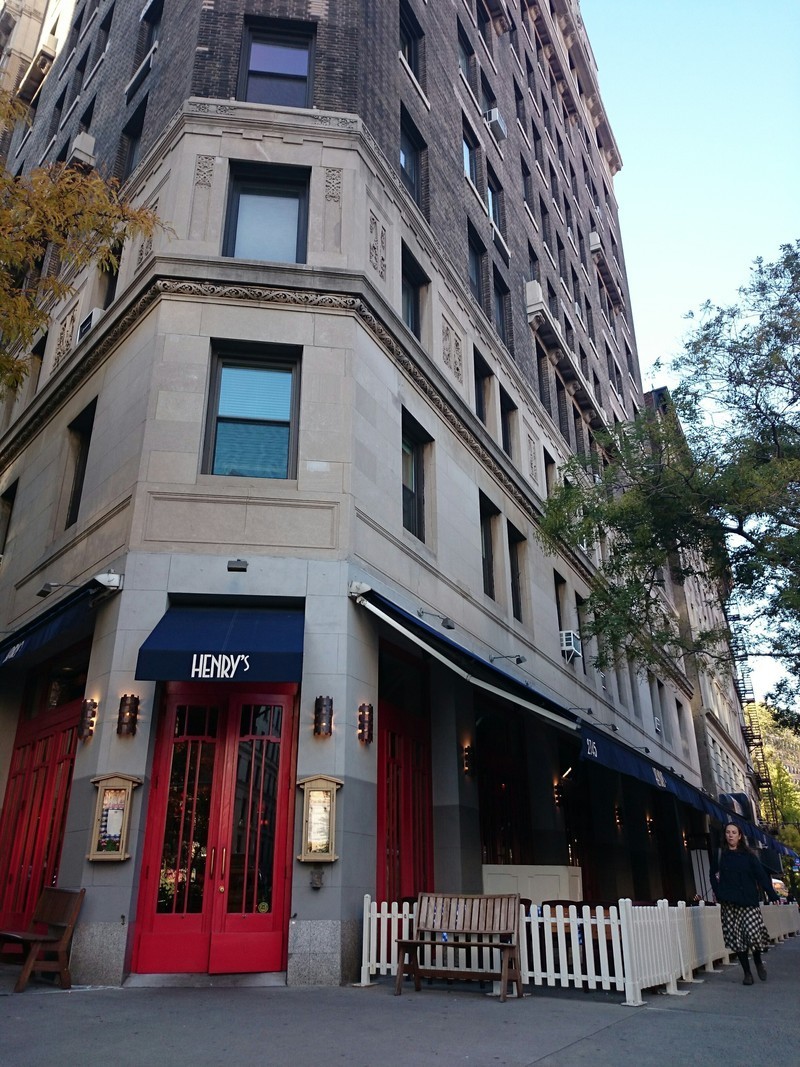
The building’s commercial space on Broadway was the home of John Valenti’s Birdland jazz club room from 1986 to 1996. Apparently it's triangle shape translated into great acoustics. Today, it houses Henry's, a modern American bistro.
You Might Also Like



